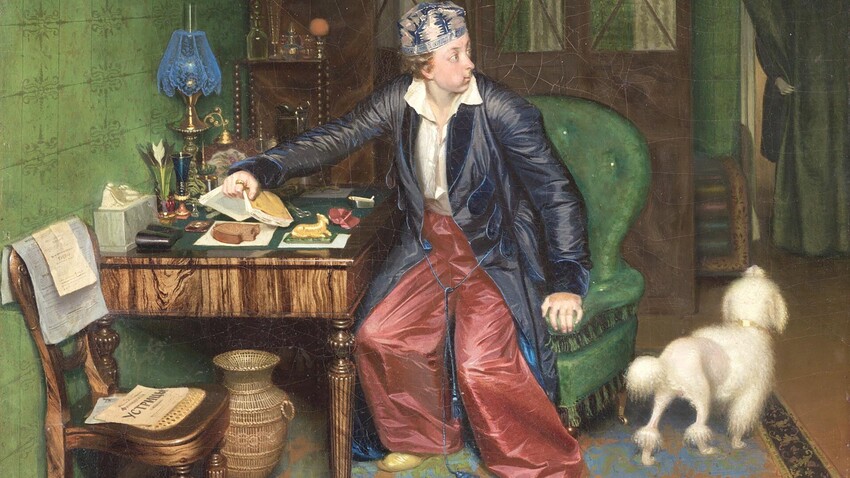
Pavel Fedotov. The Breakfast of an Aristocrat, 1849-1850.
State Tretyakov Gallery / Public Domain“You are what you eat” - the phrase, first uttered by Hypocrates, became a health-focused aphorism. But, for the Russian Empire of the 18-19th centuries, it stood for something else: what a person ate (at least in public) determined their social standing. However, if peasants could never afford “high cuisine” and foreign produce, the situation was the opposite for the aristocrats: they were forced to exclude a whole range of readily available food and drink on the grounds that it was uncouth to be caught consuming them.
Paradoxically, for 150 long years, it was actually Russian gastronomy that drove the empire’s aristocracy in the opposite direction. While those that did not wish to give it up were considered weird or simply vulgar (depending on the situation). Unbelievably, even count Aleksandr Suvorov, the iconic military commander, had a personal chef cook him Russian national dishes during high-level functions, which earned Suvorov the reputation of a freak.
The first hint of an aversion to Russian things came during Peter’s European-style reign, which affected everything from fashion to household items. By the time of Catherine II, every self-respecting Russian aristocrat felt compelled to have their own French live-in cook.
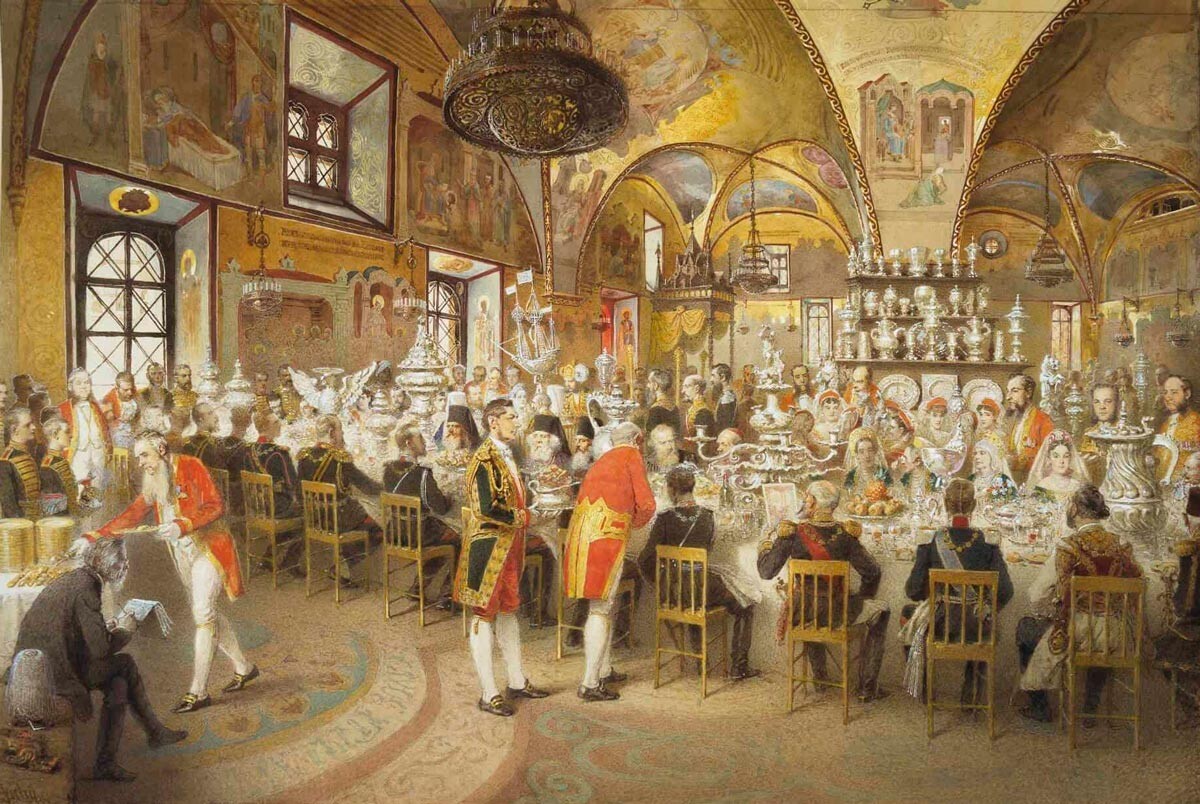
Mihai Zichi. Gala Dinner in the Faceted Chamber, 1883
State Hermitage / Public DomainGradually, the French trend began to be diluted with other European cuisines - with every decade, the Russian aristocracy discovered something else European. Even trout and cod were brought in from abroad by the nobles. Meanwhile, etiquette norms in the 18-19th centuries still did not allow any peasant dishes at Russian Royal functions - things like porridge, kvas, sbiten (a hot honey-based drink) and, more than anything else, schi, the famous sauerkraut soup (all cabbage-based dishes were considered improper by nobility).
Rye bread was also blacklisted. With time, it was gradually starting to be called “black” (the way Russians still do) - and not because of its dark color, but because it was intended for the cherni - the lower classes. Aristocrats of course loved the “French loaf” - white wheat bread.
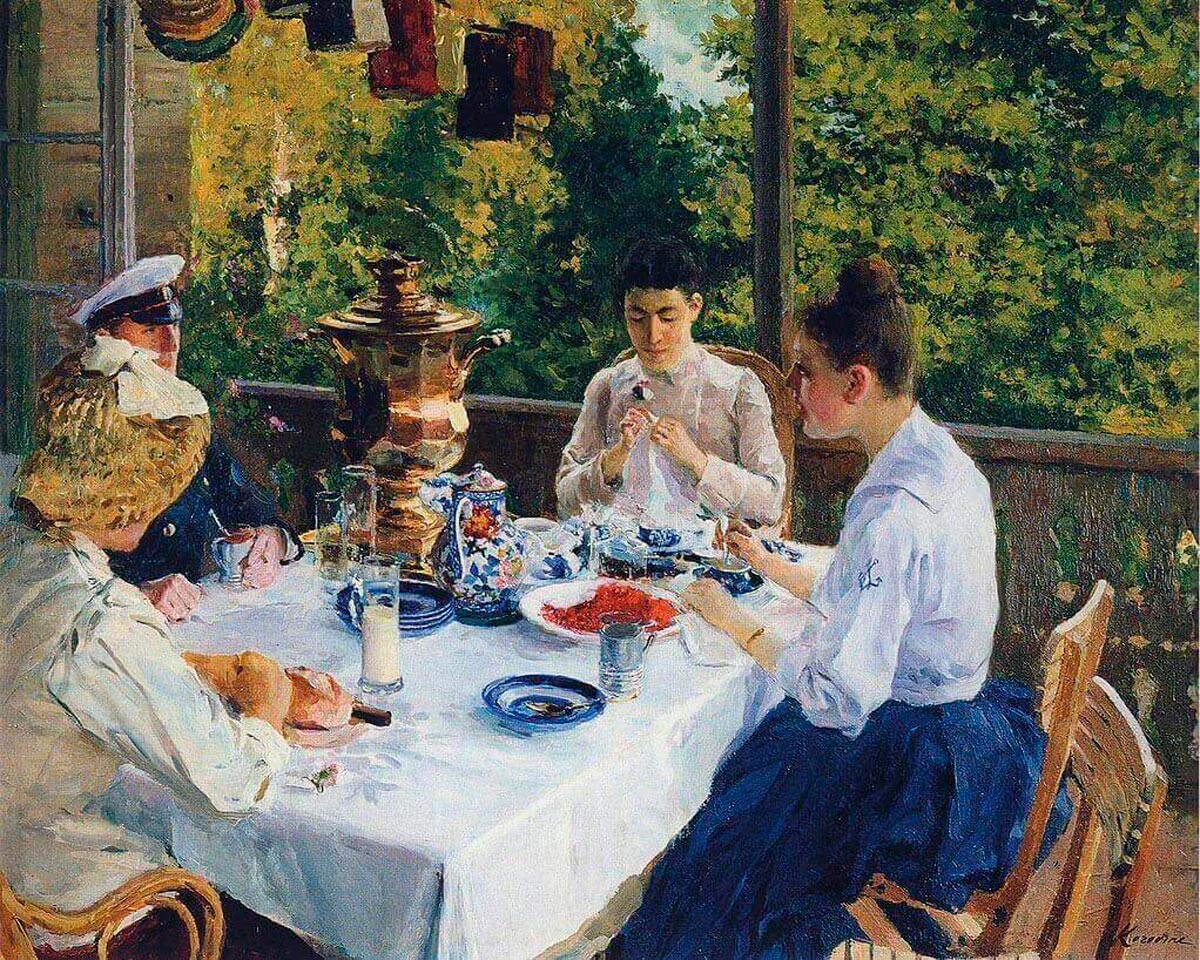
Konstantin Korovin. At the Tea Table, 1888
V.D. Polenov State Memorial Historical-Art and Natural Museum-Reserve, Tula Region / Public DomainNuts and beer were likewise on the list. “It was nuts that they served and beer that they drank,” wrote legendary poet Aleksandr Pushkin, referencing “lackey-aristocrats” he so despised. Beer and nuts in his days were considered signs of a vulgar person of improper upbringing. Interestingly, the rule only applied to whole, uncut or unpeeled nuts. The same went for sunflower seeds (and still does, to an extent) - the food was considered something fit for cattle. The nuts, however, were immediately rehabilitated in people’s eyes, were they ground into paste and used by a French chef to season a dessert.
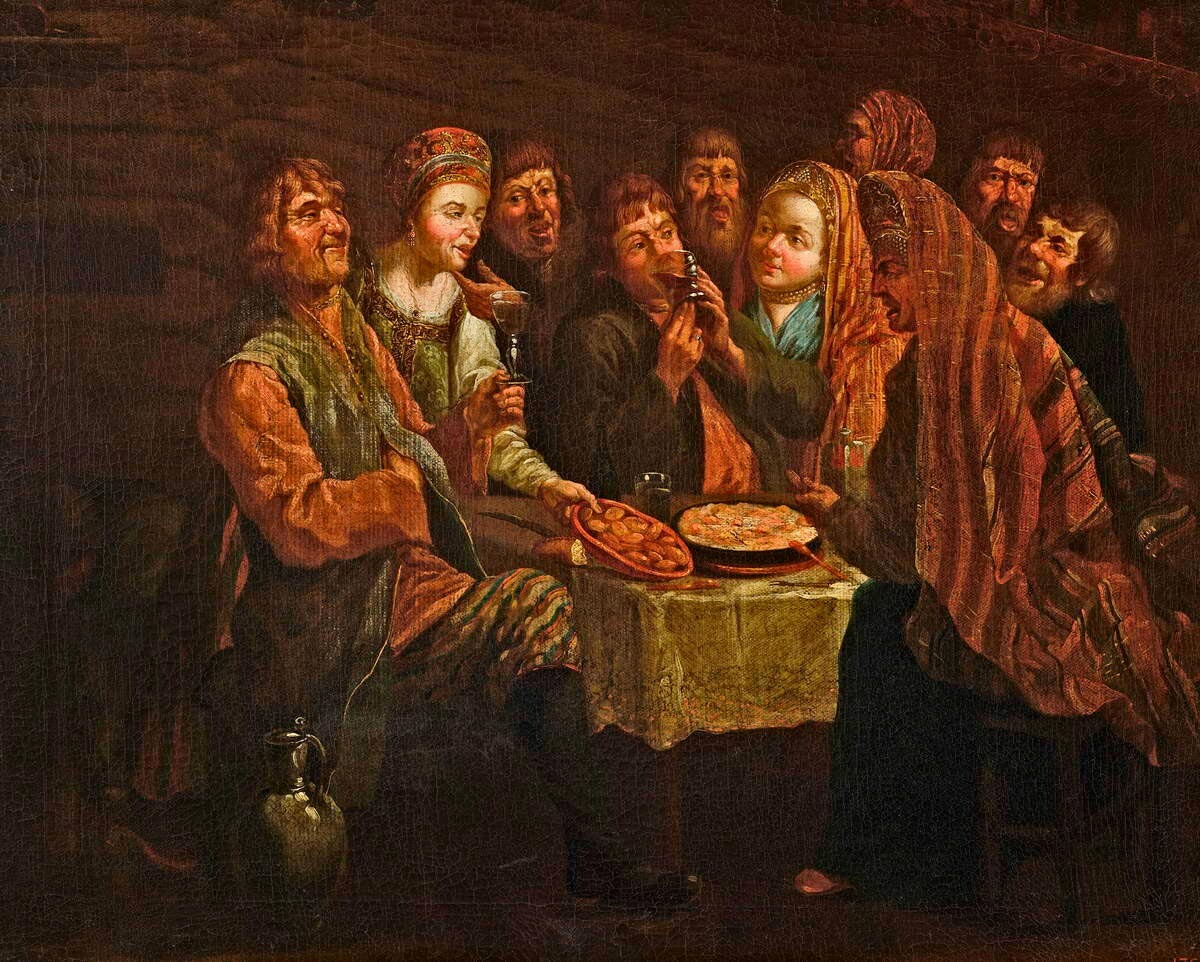
Alexander Vishnyakov. Peasant Feast, 1760 - 1770
Russian Museum / Public DomainAs for beer, it was absolutely out of the question for women in those days, while considered simply plebeian where men were concerned - specifically, local beer. And for good reason: the beer, produced somewhere on the outskirts of St. Petersburg, was rather bitter and spoiled quickly. Aristocrats would order English barrel beer, but would only drink it among fellow men - and definitely never during a theater outing.
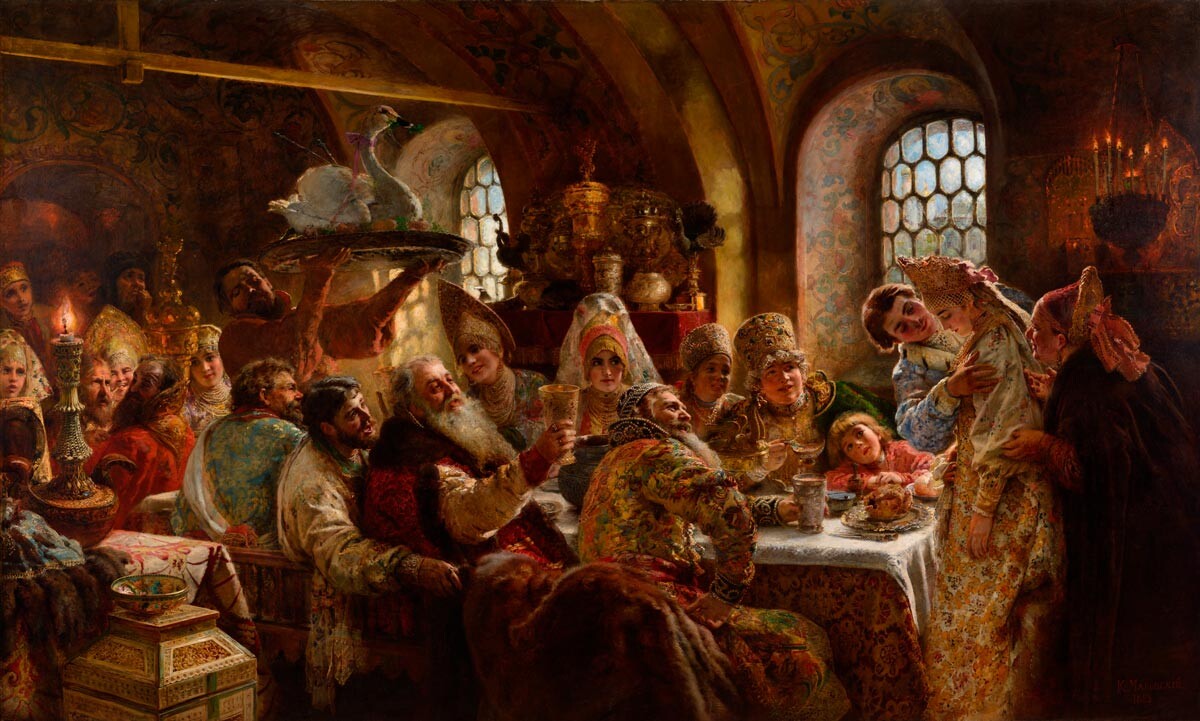
Vladimir Makovsky. Boyars wedding feast, 1883
Hillwood Estate, Museum & Gardens / Public DomainInterestingly, various meat, fish and game that naturally developed gravy as a result of stewing was referred to as “sauce” in the 19th century. Serving stew to your esteemed guests was also a lousy idea: Aleksandr Pushkin’s relative in Moscow, a certain Matvey Solntsev, was remembered for being “pompous” and “stingy” after serving stew to Prince Volkonsky.
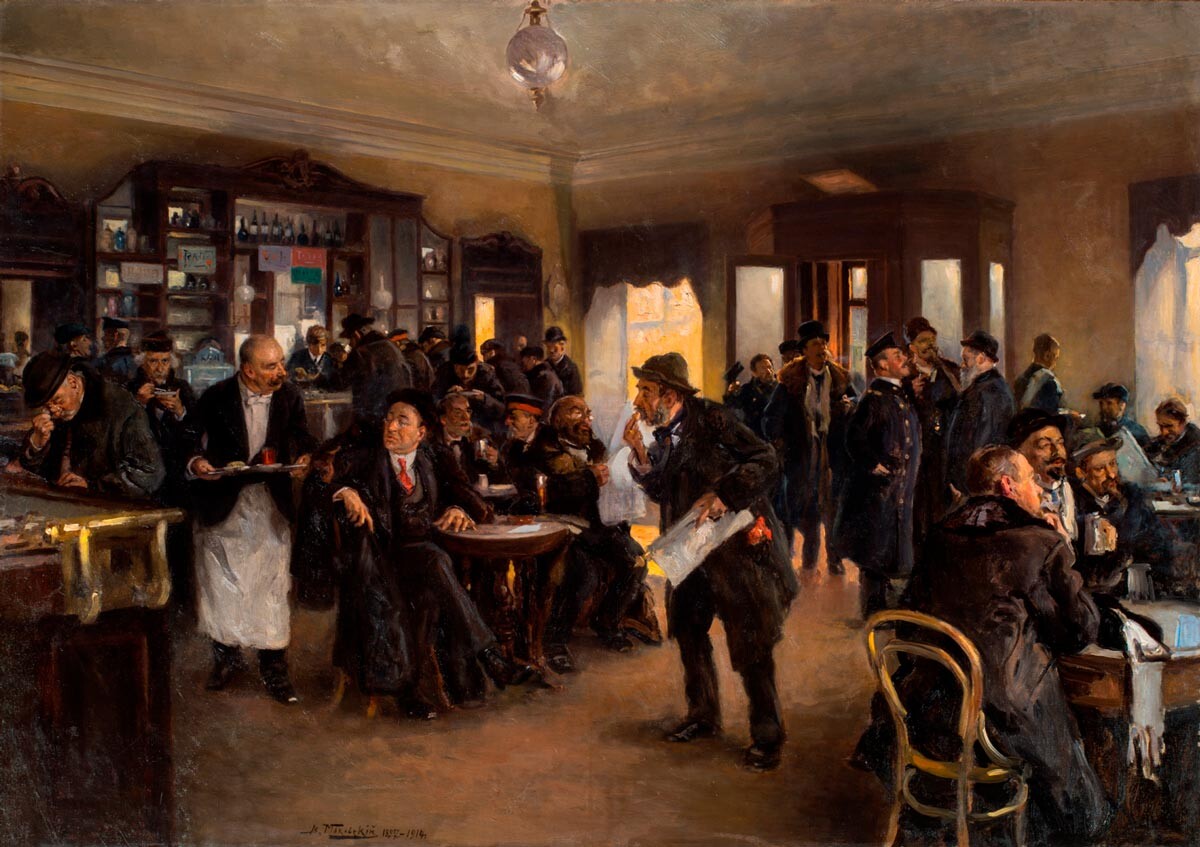
Vladimir Makovsky. In a Restaurant, 1914
Pushkin State Museum of Fine Arts / Public DomainRussian cuisine only started to infiltrate the upper echelons of society after the 1812 war with France, when patriotism was in vogue. Russian kvas - instead of French champagne - began to show up at major social events, which was amazing, considering that, just the previous day, you would have been considered a complete peasant lowlife for even considering the idea. Russian dishes also began to show up on people’s tables - not all at once, but noticeably.
In all actuality, even Catherine II had a penchant for pickles (another “lowly” food), which elicited criticism from foreign diplomats. Moreover, not every nobleman could afford a live-in French chef, or even daily deliveries of foreign groceries.
Pavel Fedotov’s painting, ‘Aristocrat’s Breakfast’, is a good example: it was first named ‘Unwanted Guest’, its story revolving around an aristocrat who really wasn’t expecting company and, therefore, had to cover a small piece of “black” bread with a napkin. Such poor nobility was actually a common sight in the 19th century.
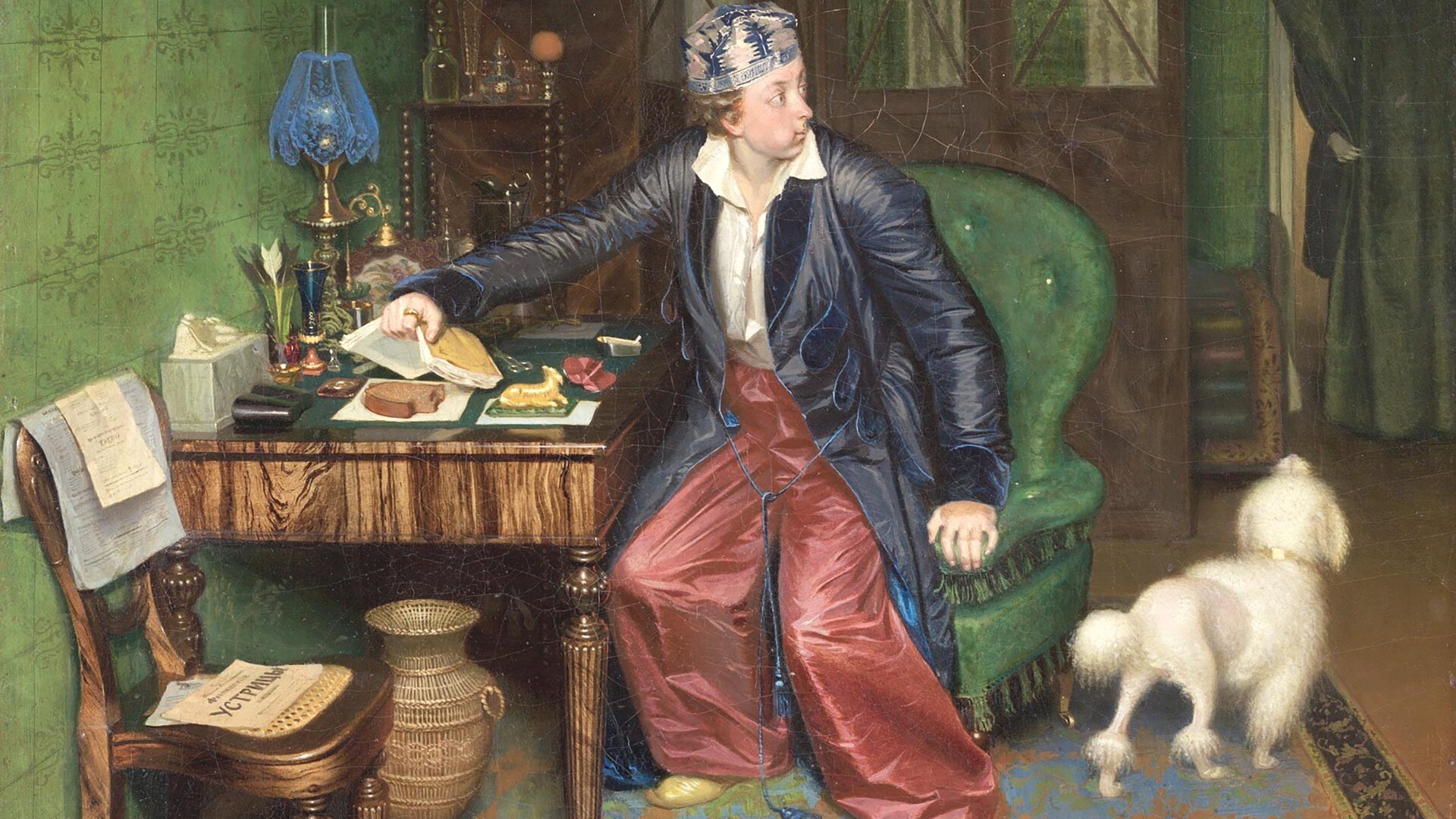
Pavel Fedotov. The Breakfast of an Aristocrat, 1849-1850.
State Tretyakov Gallery / Public DomainFurthermore, such undignified food was consumed even by those who had the money. Etiquette, meanwhile, forced people to partially or completely exclude such items when in the company of others, depending on the situation: the more important the social function, the more prominent was the presence of French dishes on the table. Some noblemen were forced to abide by the code - something Leo Tolstoy wrote about in ‘Anna Karenina’. When Stiva Oblonsky invites Levin to a restaurant, the pair order French oysters, French pentagner (vegetable soup), turbot, roast beef and rooster. Levin would have preferred his beloved porridge and shchi, but is forced to eat the French food. By the way, porridge - or kasha - was also served in restaurants, but went by its adopted French name - kacha a la Russe, as a result of an apparent attempt to make the dish sound more ‘palatable’. The same went for every Russian dish on the menu in those days.
It was in the 19th century that “shameful” dishes became a symbol of oppositional sentiments at certain times. In aristocratic circles, where political views often diverged from the direction of official state policy, a “lowly” dish could be served, which became a kind of protest to upper-class snobbery.
This way, Decemberist Kondraty Ryleyev, during secret meetings at his home (which he referred to as “Russian breakfasts”) served various “forbidden” foods to his cohorts - including cabbage and rye bread. All of this was washed down with no less Russian, but perfectly socially acceptable vodka - instead of the shameful beer.
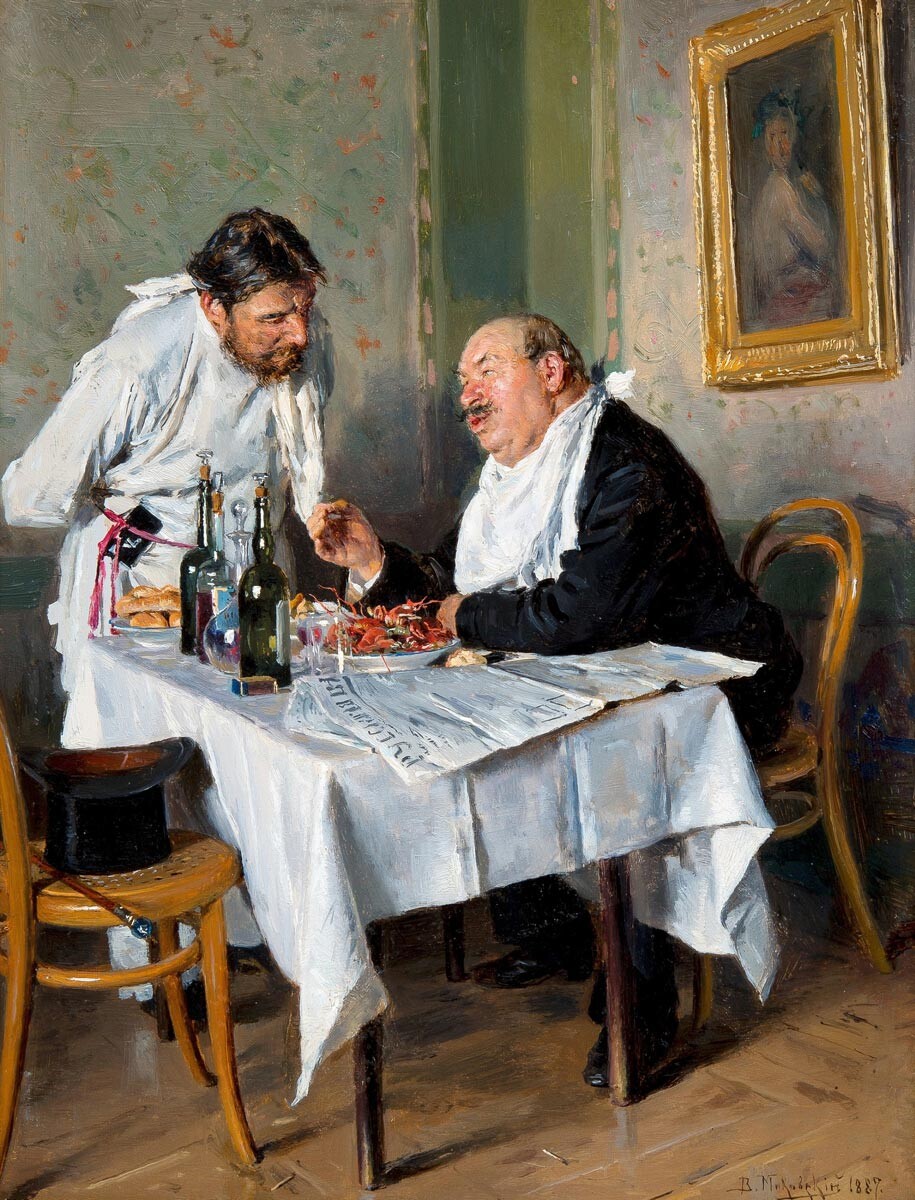
Vladimir Makovsky. In a tavern, 1887
Private Collection / Public DomainThe first Slavophiles of the 1830s-1840s also staged demonstrative performances at their gatherings: they would mix Russian kvas with French champagne inside a large silver pot and drink it as a gesture of unity with the Russian masses.
The distinction between “decent” and “improper” food began to wane towards the second half of the 19th century. Guryevskaya kasha, for example (cream of wheat with various added toppings) became one of Alexander III’s most beloved dishes. And, thus, France’s influence on Russian aristocracy declined and Russian ethnic cuisine gained new ground.
If using any of Russia Beyond's content, partly or in full, always provide an active hyperlink to the original material.
Subscribe
to our newsletter!
Get the week's best stories straight to your inbox